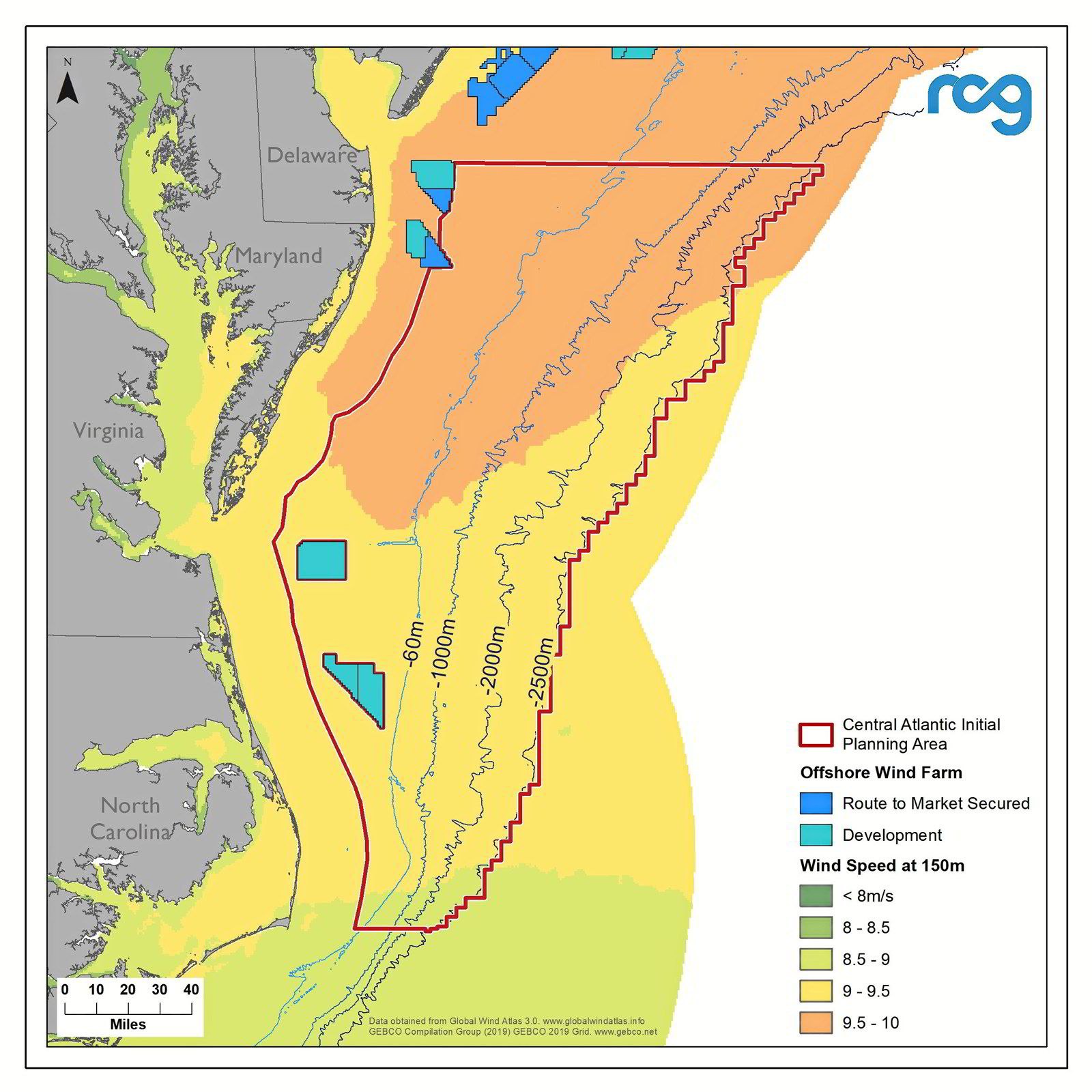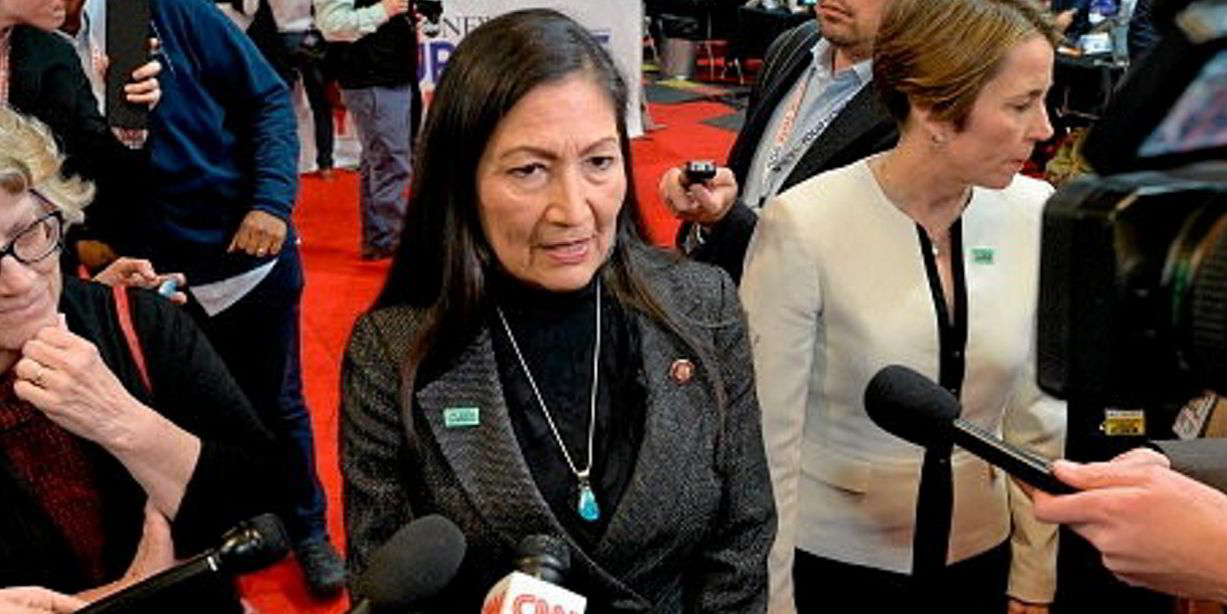When US interior secretary Deb Haaland announced in October that the Bureau of Ocean Energy Management (BOEM) would hold up to seven new lease sales by 2025, one of the locations earmarked for potential development caught some by surprise – but could now play a huge role in the nation’s offshore wind future.
While areas such as the New York Bight and the Carolinas were widely tipped to play a key part in the Biden-Harris administration’s goal to deploy 30GW of offshore wind by 2030, the inclusion of the Central Atlantic – specifically the far-reaching area that BOEM has allocated for further study – was further off the industry’s radar.
The Central Atlantic Initial Planning Area (IPA), a wide swath of seabed 32km (20 miles) offshore stretching from Dewey Beach, Delaware and to Cape Hatteras, NC, is in many respects a work in progress as much still needs to be studied in the area (see map at foot).
Based on the map's boundaries, The Renewables Consulting Group (RCG) estimates the Central Atlantic IPA at just short of 52,000 sq km. To put that massive number into some context, the zone is nearly six times larger than the total area of all offshore wind leases executed in the US to date at 8,700 sq km.
It is not yet known the number of lease sales the Central Atlantic IPA will yield. In general, BOEM follows a five-step procedure before reaching a lease auction. The Central Atlantic IPA is at the first step: planning and analysis. Here a Renewable Energy Task Force is established to coordinate among federal, state, local, and tribal governments around the leasing process and share information about the advantages and disadvantages of potential offshore wind areas.
The industry observes and makes contributions to the Task Force and thereby stays abreast of developments. As BOEM works through this initial stage, the agency is meeting with stakeholders and next month plans to hold meetings with fisheries management councils and representatives from recreational fishing organisations. The next meeting of the Central Atlantic Task Force is expected in February 2022.
The origin of the Central Atlantic IPA dates back to April 2020 when the Virginia Clean Economy Act was passed into law creating Virginia’s 100% clean energy by 2050 Clean Energy Standard. Governor Ralph Northam then wrote to BOEM requesting the formation of a renewable energy regional task force that could lead to a lease sale. BOEM agreed and created a Central Atlantic Intergovernmental Renewable Energy Task Force encompassing the area defined above. The first Task Force meeting took place in February 2021.
Location: 20 statute miles offshore from Dewey Beach, Delaware to Cape Hatteras, North Carolina.
Wind Resource: Based on RCG’s Global Renewable Infrastructure Projects (GRIP) database, the wind resource at 150 metres (m/s) is estimated to be:
Min = 8.9
Mean = 9.4
Max = 9.8
Bathymetry: Depths within the Central Atlantic Initial Planning Area are as follows:
Min = 15m
Max = 2670m
Mean = 933m
Clearly, Virginia – along with other southeastern and mid-Atlantic states – is banking on offshore wind to help meet its economic and environmental objectives. In October 2020, Northam announced a three-state collaboration with Maryland and North Carolina to advance offshore wind projects in the region and promote the area as a hub for offshore wind, which he described as offering “tremendous economic and environmental benefits for the region”.
Although there is still much to be determined, one thing is clear: the US East Coast has yet another promising area to further develop offshore wind energy.
Identifying the Central Atlantic IPA is yet another example of the Biden-Harris Administration’s unprecedented commitment to offshore wind. Though it is early in the process, the Central Atlantic presents many opportunities for this multistate effort as well as the federal government to reach all of their renewable energy and climate change goals.
- Doug Pfeister is managing director for the Americas at The Renewables Consulting Group.




